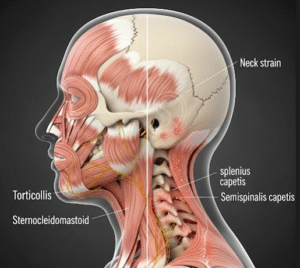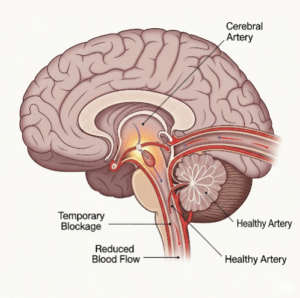Overview
Quadrantanopia is a type of partial vision loss affecting one-quarter of the visual field in one or both eyes. The condition typically results from damage to the visual pathways in the brain rather than from problems in the eyes themselves. Depending on the location of the brain injury, vision loss can occur in the same quadrant of each eye (homonymous quadrantanopia) or in different quadrants (heteronymous quadrantanopia).
What is Quadrantanopia?
Quadrantanopia occurs when damage happens along the optic nerve pathways, optic radiations, or visual cortex in the occipital lobe of the brain. The visual field loss corresponds to the damaged part of the brain’s visual processing system.
For example:
- Superior quadrantanopia: Loss in the upper quarter of the visual field.
- Inferior quadrantanopia: Loss in the lower quarter of the visual field.
This condition often indicates a neurological cause, such as a stroke, brain tumor, traumatic brain injury, or demyelinating disease like multiple sclerosis.
Symptoms
- Loss of vision in a quarter of the visual field (upper/lower, left/right)
- Difficulty reading or recognizing objects in the affected area
- Bumping into objects on the blind side
- Reduced spatial awareness
- Possible associated neurological symptoms such as headaches or weakness, depending on the cause
Causes
Quadrantanopia is caused by damage to specific parts of the brain’s visual processing system, including:
- Stroke (most common cause)
- Brain tumors in the temporal or parietal lobes
- Head trauma
- Brain surgery complications
- Multiple sclerosis or other demyelinating diseases
- Brain aneurysm or vascular malformations
- Infections affecting the brain
Risk Factors
- History of cerebrovascular disease or high blood pressure
- Brain tumors or neurological disorders
- Head injury or neurosurgical procedures
- Multiple sclerosis or other autoimmune diseases
- Advanced age (higher stroke risk)
Complications
- Permanent partial vision loss if the brain damage is irreversible
- Increased risk of accidents due to reduced visual awareness
- Difficulty driving or performing tasks requiring full visual fields
- Psychological effects, including anxiety and depression
Prevention
While some causes of quadrantanopia cannot be prevented, you can lower the risk by:
- Managing blood pressure, cholesterol, and blood sugar to prevent stroke
- Wearing protective headgear during high-risk activities
- Seeking early treatment for neurological symptoms
- Undergoing regular medical check-ups if you have vascular or neurological risk factors
Treatment Options – Korea
In Korea, treatment for quadrantanopia focuses on identifying and managing the underlying cause and on vision rehabilitation:
- Neurological evaluation: MRI and CT scans to locate the brain lesion
- Stroke management: Immediate clot-busting drugs (thrombolysis) or thrombectomy if detected early
- Tumor treatment: Neurosurgery, radiotherapy, or chemotherapy depending on tumor type
- Rehabilitation therapy: Vision therapy programs to train patients to compensate for field loss
- Assistive devices: Special prism glasses to expand the visual field
- Occupational therapy: Helps patients adapt to daily life challenges
- Follow-up care: Regular neurological and ophthalmological check-ups
Specialized rehabilitation centers in Seoul and Busan provide visual scanning training and neuro-optometric therapy to help restore functional vision as much as possible.













